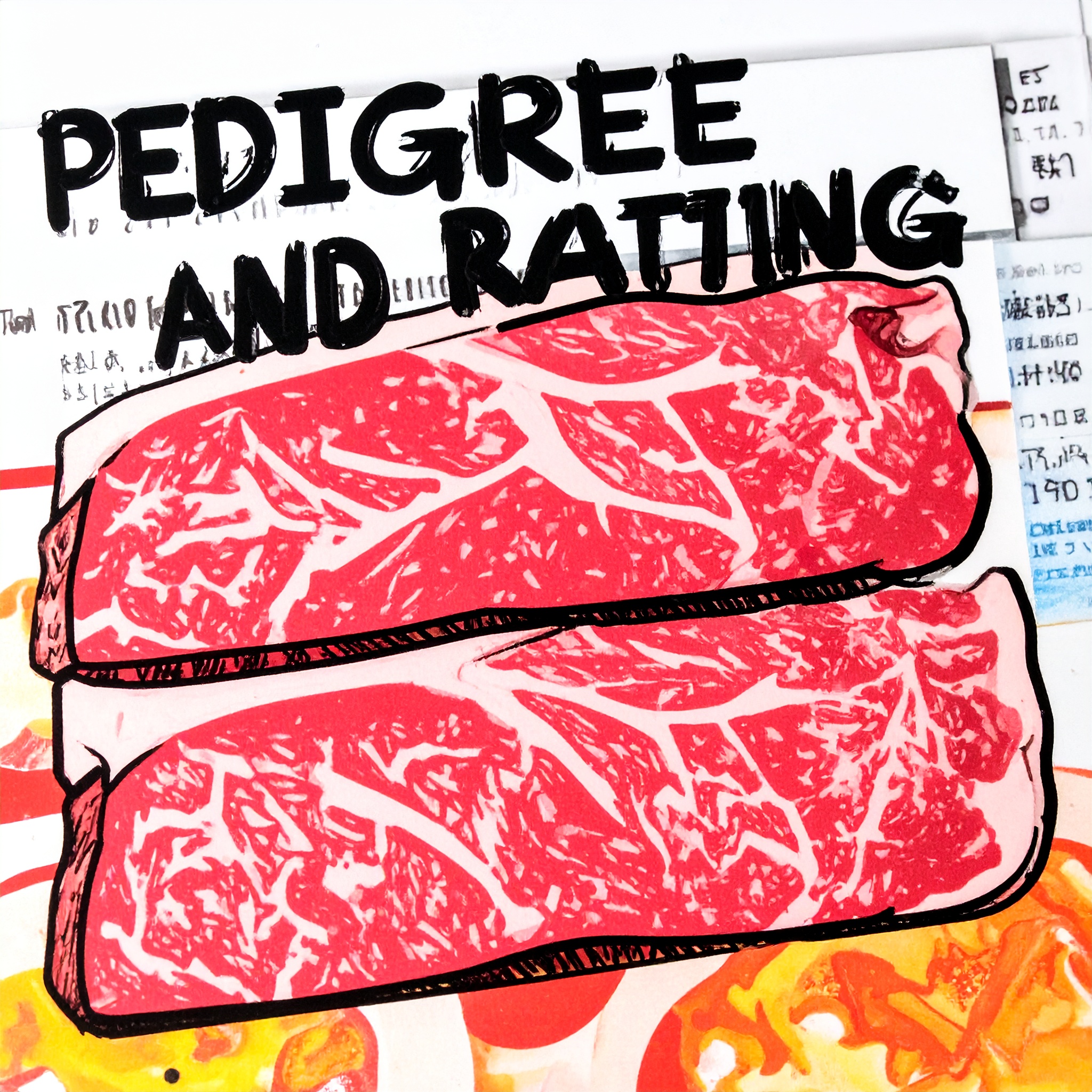Renowned as a global symbol of premium gastronomy, Wagyu commands a diverse price spectrum—with some exceptional cattle fetching over ¥3 million apiece. But this extraordinary valuation is not based on meat quality alone. Instead, it is the confluence of three critical factors—pedigree, grading, and brand equity—that determines a Wagyu’s market position. The absence of even one of these elements prevents premium pricing, while the alignment of all three can elevate a steer to the status of a “culinary masterpiece” at international auctions.
First and foremost is the pedigree of Wagyu. While cattle may appear similar at a glance, their lineage can dramatically influence value. In particular, the Tajima bloodline—ancestral to Kobe and Matsusaka beef—carries historically esteemed traits such as exquisite marbling quality and low-melting-point fat, which directly affect meat texture and flavor. Among producers, Wagyu with a pedigree from elite sires is often expected to command higher market ratings, making pedigree certification a standard part of any transaction. Even artificial insemination becomes a price-setting step: semen from top-tier bulls can cost tens of thousands of yen per dose, making genetic planning the foundation of Wagyu valuation.
Pedigree management extends far beyond the preservation of a brand name. It determines how a calf is evaluated at auction, which finishing farm will receive it, and even its potential future as a breeding animal. In the world of Wagyu, pedigree is not just a predictor of meat quality—it is, in essence, a form of asset value.
The next factor is grading. When Wagyu is shipped as carcass meat, it is evaluated based on two axes: “yield grade” and “meat quality grade.” Yield grade is categorized into three levels—A, B, and C—indicating the proportion of high-value cuts obtainable from the carcass, with “A” being the most efficient. Meat quality grade, on the other hand, is assessed on a scale from 5 to 1, based on criteria such as marbling (intramuscular fat), color and luster, firmness and texture, and fat quality. The highest accolade, “A5,” is reserved for beef that meets both the top yield grade of A and the top quality grade of 5.
Grading serves as a benchmark for pricing in the meat market, and A5 status is consistently highlighted by premium yakiniku restaurants, upscale dining venues, and luxury department stores as a symbol of brand prestige. Yet it is crucial to understand that this grade reflects only the condition of the dressed carcass—it does not guarantee the actual taste or texture on the plate. Nevertheless, consumers have come to regard it as proof of exceptional flavor, and this perception significantly influences market prices.
Equally indispensable to consider is the element of brand equity. Within the world of Wagyu, a rich array of regional brands exists—each upheld by stringent certification protocols and carefully curated breeding standards. These brand names are not arbitrarily assigned; they are reserved exclusively for cattle raised for a designated period within specific regions. Factors such as local feeding methods, water quality, climate conditions, and even the character of the land itself all contribute to the distinctive identity of each brand. In this way, regional heritage becomes a defining asset, shaping a premium value that transcends the product and speaks to provenance, craftsmanship, and cultural authenticity.
Moreover, award-winning Wagyu brands often gain visibility and credibility through prestigious tasting contests and breed exhibitions. Cattle that perform exceptionally well—or even their progeny—tend to fetch premium prices in the market. Thus, brand prestige is not only a testament to the meat’s quality, but also a compelling narrative that builds consumer trust.
It is clear that Wagyu’s price is not determined by visual beauty or marbling alone. Instead:
-
Pedigree enables forecasts of future performance,
-
Grading quantifies meat quality,
-
Brand strength socializes and validates that value.
The interplay of these three dimensions sustains Wagyu’s remarkable prices—reaching hundreds of thousands of yen per head.
Today, interest extends well beyond Japan. International buyers are increasingly drawn to calves with verified pedigrees and sires from proven, high-grade lineages. As global evaluation standards continue to converge, the evolution of Japan’s unique Wagyu culture and market merits close attention. By understanding the narrative behind each price tag, we can appreciate Wagyu not merely as luxury meat, but as living assets—each embodying a story of heritage, care, and crafted value.




